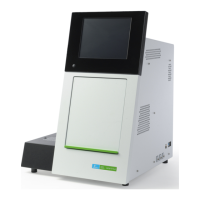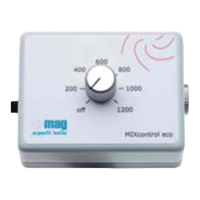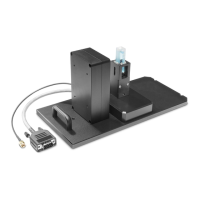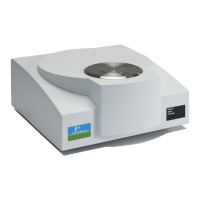Glossary of Terms 318
V4.2 LabChip GX User Manual PerkinElmer
Protein Assay Analysis
Protein assays utilize a chemistry that generates an extra set of
peaks (system peaks) just above the lower marker that should not
be included in the analysis. These system peaks must be identified
and excluded from further quantitative analysis. For ladder analysis,
peaks occurring after the lower marker less than the “Ladder Ratio”
analysis setting, are tagged system peaks to avoid confusion with
legitimate ladder peaks.
Protein samples contain a single lower marker. Alignment to a
single marker does not provide enough constraints to align large
proteins, so data is aligned to two ladders, one sipped just before
the sample wells and another sipped just after the sample wells.
The second ladder is called the bracket ladder. Samples are scaled
so the sample’s lower marker is nearly aligned with both ladder
lower markers. The scaling is weighted by the proximity in sip time
to each ladder. The sample sipped closest to the primary ladder is
scaled to align more closely to the primary ladder and the sample
sipped just before the bracket ladder is scaled to align most closely
to the bracket ladder. Then each sample is shifted in time so the
sample's lower marker aligns exactly with the primary ladder lower
marker.
After alignment, the size of the protein producing each peak is
calculated from the aligned peak time using a log (size) versus
1/(Time-T0) fit to the primarily ladder peaks of known size and
measured migration time. T0 is determined empirically as the time
offset which delivers the best straight line fit to the ladder data, The
value of T0 used for the fit can be viewed in the Well Table View.
This fit to the ladder peak data can be viewed by selecting Standard
Curve from the Analysis menu. After sample peaks have been
sized, the system peaks are identified and excluded based on their
size. Any peak of size greater than the lower marker but less than
the Min. Sample Size specified in the Assay Analysis Window is
labeled a system peak and excluded from concentration and purity
analysis.
To determine sample peak concentration, the peak areas are first
corrected to compensate for the fact that the fluorescence
intensities are sampled at a constant time interval so slower moving
proteins spend more time under the detector than fast moving
proteins. The peak concentration is then calculated using the ladder
peak areas and concentration for the ladder supplied in the Assay
Analysis Window. The concentration is adjusted for the differing
dilution ratios of sample and ladder.
